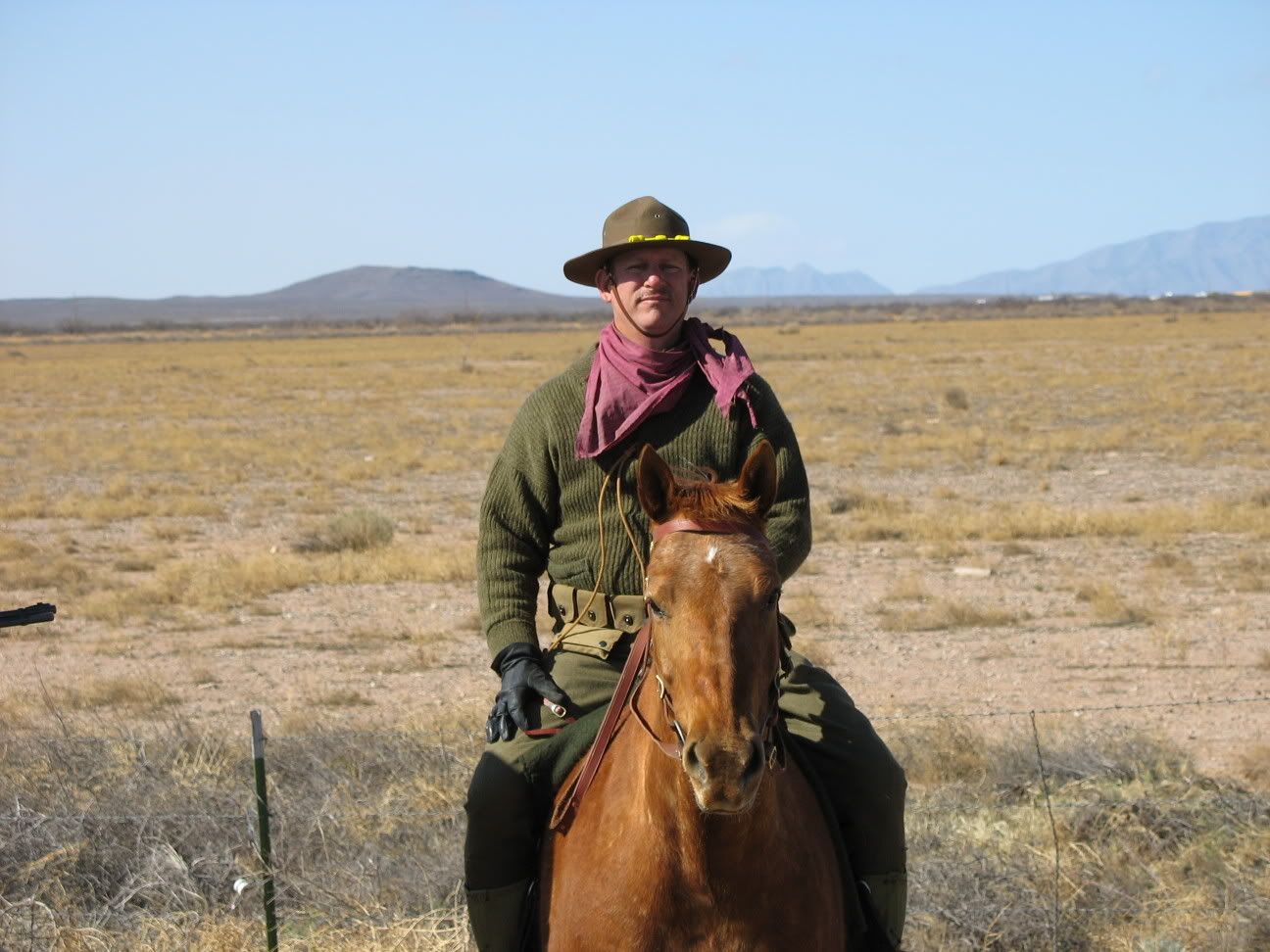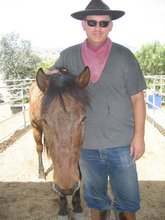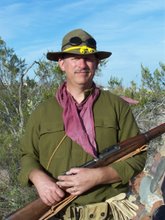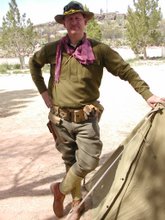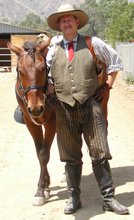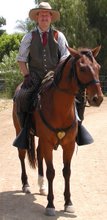Today, a friend and I trailered our horses over th Ahmanson Ranch for a trail ride. I've been here before last Fall but I really haven't been out on the trail for extended periods since Max's leg and knee problems so I was looking forward to this with anticipation (and a little trepidation).
Ahmanson Ranch is relatively close to my friend's house and it's about a 45-minute drive from my stable but it's another world apart. Located at the edge of the West San Fernando Valley, it's a refreshing contrast to the urban sprawal and over-development and thanks to a hard-fought battle by various public interest groups and the public in general, it was saved from development (multi-million dollar homes and the usual BS). Click
Here for some background information.
For a nice map of the trails, click
Here for a map of the area.
One of the reasons I really like this area is that the trails are optimal for horses- no rocks, good footing, fairly wide trails, and long open stretches for trotting and cantering. And lots of grass for your horse to snack on. In short, horse paradise. Also, it really gives you a good idea of what a lot of California USED to look like, once upon a time.
There are two ways to access the area, one from the East off of Victory Blvd. (at the extreme West end) or from Las Virgenes Road on the West side. The East side is more accessible for horse trailers and closer to where we're located so we used that one.
After arriving and paying a nominal $3 parking fee, we tacked up and were soon on the trail. There's a large number of hikers and joggers on the main central trail and some mountain bikes but everyone was polite and there were no issues. Also, Max is getting much better around bikes so it's not as bad an issue that it once was.
Footing on the trail was good although a bit hard from having dried out from the recent rains we've had here. We made our way Northwest and after warming up for about 20 minutes at the walk, we trotted for some stretches. Max is slower than my friend's horse and tends to be more of a follower so my friend took the lead for most of this. On the trot and canter, Max exerts himself trying to keep up and sometimes gets a tad excited so I have to check him once in awhile to get his attention.
We followed the central main trail all the way to Las Virgenes Road and then took a trail that wung around to the East in a large loop. Overall, we estimated that the total trails we rode was about 6 miles or so.
We finally cantered for some long stretches and Max was defnitely game although he'd tend to give a little buck-out when I'd send him into a canter (Max tends to do this when he's exuberant) but it's easy to settle him down. This is the first long trail ride that I've ridden using the Pelham bit and I found it useful for getting Max's attention when needed- the curb effect acts as sort of a "HEY BUDDY, PAY ATTENTION!" when needed (not too hard though).
By the end I had Max in a full fun and he was defintely moving out trying to keep up with his trail buddy (my friend's horse and Max are very attached and I've found that he trailers better when he's with the other horse). After cooling down Max at the walk, we finally made our way back to the trailer. Max was completely coveed in sweat and he'd definitely gotten a good workout. :-)
This is probably one of the best trail rides I've ever taken and while it was only about three hours, it was a good workout for both Max and I and there appeared to be no leg issues. The Pelham bit seemed to have served it's purpose well and although we we need to work on the canter departs a bit with Max's "whoop-de-whoop" buckiing-out, it was still fine. Finally, when we got back to the stables, I made sure to give Max a dose of Bute along with his usual bucket of A&M, Omolene 200 and gloucosamine supplement.
I'll defintely be back soon! :-)
 Heading back in a loop towards the start point.
Heading back in a loop towards the start point.

Looking Northwest towards Las Virgenes Road. If you go far enough North, you will hit Chesebrough Canyon. If you go more West, you can eventually link up with trails that will take you towards Malibu Creek State Park (but it will be a LONG ride and you'll have to pass over some seriously paved streets to get over the 101 Freeway.
 Looking Southeast towards the West San Fernando Valley. Once upon a time, before the developers screwed everything up, a lot of the Valley was like the foreground- I remember the last of it growing up in the West Valley. Jeeze, I was born 30 years too late!
Looking Southeast towards the West San Fernando Valley. Once upon a time, before the developers screwed everything up, a lot of the Valley was like the foreground- I remember the last of it growing up in the West Valley. Jeeze, I was born 30 years too late!

 Now admittedly, these are reenactor/living history recreations and thus, there's potential for error but I think it gives a pretty good idea (But I'm not wild about the tie-down in the second picture). More later! :-)
Now admittedly, these are reenactor/living history recreations and thus, there's potential for error but I think it gives a pretty good idea (But I'm not wild about the tie-down in the second picture). More later! :-)














